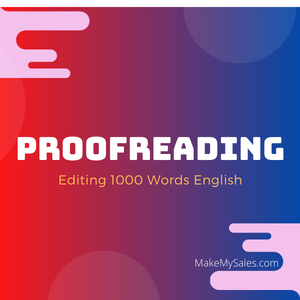Work on Microsoft Word excel or Powerpoint
- Any type of editing in Microsoft Word or Excel
- Spread sheets made on Microsoft Excel
- Graphs
- Tables
- Conversion from Microsoft word to PDF
- Inserting formulas in Microsoft Excel spread sheet
- Data Entry
What is Microsoft Excel and What Would I Use it for?
Electronic Spreadsheet Program Description and Uses
Question: What is Microsoft Excel and What Would I Use it for?
Answer:
Excel is an Electronic Spreadsheet Program.
An electronic spreadsheet is a computer software program that is used for storing, organizing and manipulating data.
Electronic spreadsheet programs were originally based on paper spreadsheets used for accounting. As such, the basic layout of computerized spreadsheets is the same as the paper ones. Related data is stored in tables – which are a collection of small rectangular boxes or cells organized into rows and columns.
Current versions of Excel and other spreadsheet programs can store multiple spreadsheet pages in a single computer file.
The saved computer file is often referred to as a workbook and each page in the workbook is a separate worksheet.
EXCEL ALTERNATIVES
Other current spreadsheet programs that are available for use include:
Google Sheets (or Google Spreadsheets) – a free, web-based spreadsheet program;
Excel Online – a free, scaled-down, web-based version of Excel;
Open Office Calc – a free, downloadable spreadsheet program.
SPREADSHEET CELLS AND CELL REFERENCES
When you look at the Excel screen – or any other spreadsheet screen – you see a rectangular table or grid of rows and columns, as shown in the image above.
In newer versions of Excel, each worksheet contains roughly a million rows and more than 16,000 columns, which necessitates an addressing scheme in order to keep track of where data is located.
The horizontal rows are identified by numbers (1, 2, 3) and the vertical columns by letters of the alphabet (A, B, C). For columns beyond 26, columns are identified by two or more letters such as AA, AB, AC.
The intersection point between a column and a row, as mentioned, is the small rectangular box known as a cell.
The cell is the basic unit for storing data in the worksheet, and because each worksheet contains millions of these cells, each one is identified by its cell reference.
A cell reference is a combination of the column letter and the row number such as A3, B6, and AA345. In these cell references, the column letter is always listed first.
DATA TYPES, FORMULAS, AND FUNCTIONS
The types of data that a cell can hold include:
- numbers;
- text;
- dates and times;
- Boolean values;
- formulas.
Formulas are used for calculations – usually incorporating data contained in other cells. These cells, however, may be located on different worksheets or in different workbooks.
Creating a formula starts by entering the equal sign in the cell where you want the answer displayed. Formulas can also include cell references to the location of data and one or more spreadsheet functions.
Functions in Excel and other electronic spreadsheets are built-in formulas that are designed to simplify carrying out a wide range of calculations – from common operations such as entering the date or time to more complex ones such as finding specific information located in large tables of data.
EXCEL AND FINANCIAL DATA
Spreadsheets are often used to store financial data. Formulas and functions that are used on this type of data include:
- Performing basic mathematical operations such as summing columns or rows of numbers;.
- Finding values such as profit or loss.
- Calculating repayment plans for loans or mortgages.
- Finding the average, maximum, minimum and other statistical values in a specified range of data.
- Carrying out What-If analysis on data – where variables are modified one at a time to see how the change effects other data – such as expenses and profits.
EXCEL’S OTHER USES
Other common operations that Excel can be used for include:
- Graphing or charting data to assist users in identifying data trends;
- Formatting data to make important data easy to find and understand;
- Printing data and charts for use in reports;
- Sorting and filtering data to find specific information;
- Linking worksheet data and charts for use in other programs such as Microsoft PowerPoint and Word;
- Importing data from database programs for analysis.







Sheela Ramesh –
Best Work on Microsoft Word excel or Powerpoint
Michel george –
The familiar Office Experience you know and trust, so there’s nothing new to learn. share your documents with anyone and work together in real-time